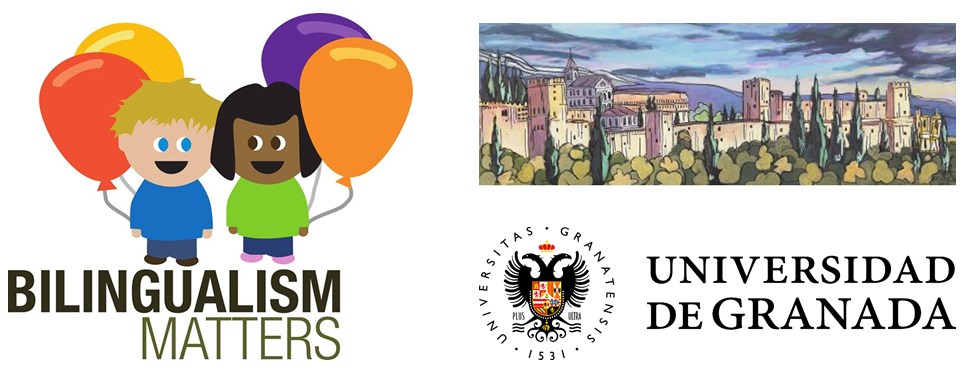Por Teresa Quesada
Baker y Wright (2017) dedican un capítulo en el que nos hablan sobre el desarrollo tardío de los bilingües. En este capítulo podemos aprender que ser bilingüe no solo incluye a aquellos individuos que están expuestos a dos lenguas desde la infancia.
Los bilingües secuenciales o tardíos son aquellos que adquieren una primera lengua y, una vez adquirida, empiezan a adquirir una segunda o tercera lengua. A pesar de que esa segunda o tercera lengua se adquiere más tarde, los bilingües secuenciales o tardíos pueden llegar a ser competentes en ambas lenguas.
Baker and Wright (2017) dedicate a chapter in their book to explaining the development of so-called “late bilinguals”. In this chapter they explain that being bilingual does not only include those individuals who are exposed to two languages since childhood.
“Sequential” or “late” bilinguals are individuals who acquire a first language and, once acquired, begin to acquire a second or third language. Although that second or third language is acquired later, these types of bilinguals can become proficient in both languages.
Hay diversas formas de llegar a ser competente en una segunda lengua, incluso cuando uno empieza a adquirirla siendo adulto. Por tanto, no hay una única ruta por la cual los aprendices, ya sean jóvenes o adultos, puedan llegar a ser competentes en la segunda lengua.
There are a plethora of ways to become proficient in a second language, even when one starts acquiring it as an adult. There is no single “correct” route by which learners, whether young or adult, can become proficient in the second language.

Primero, las circunstancias y la motivación que llevan al individuo a adquirir una segunda lengua son muy variadas e influyen en el proceso de adquisición. Además, hay distintos entornos educativos, formales e informales, para adquirir una segunda lengua y el entorno también será condicionante para la adquisición.
The circumstances and motivation that lead the individual to acquire a second language are very varied and influence the acquisition process. In addition, there are different educational environments, formal and informal, for acquiring a second language and the environment will also be a conditioning factor for acquisition.
Si se tienen en cuenta todos estos factores (motivación, circunstancias de adquisición, entorno educativo, etc.), resulta difícil decidir si la adquisición de una segunda lengua será más efectiva en niños, jóvenes o adultos. De hecho, el factor edad ha sido un tema muy debatido en la adquisición de segundas lenguas. Muchos estudios defienden que hay un periodo crítico para alcanzar una adquisición completa de una segunda lengua (dependiendo del área lingüística, estos estudios muestran que el periodo crítico para adquirir una segunda lengua ocurre entre los 6 y 8 años, a los 12 años o incluso a los 15 años). Otros estudios, sin embargo, defienden que los jóvenes y adultos poseen unas ventajas de desarrollo (puesto que ya conocen el lenguaje a través de su lengua materna) que los llevan a un proceso de adquisición más eficiente y rápido.
Por tanto, el factor edad es importante puesto que incluye un claro componente biológico que influye en el desarrollo del lenguaje. Sin embargo, hay otros muchos factores tales como la motivación, la actitud, la aptitud, o el contexto de adquisición, que juegan un papel muy relevante y también condicionarán la adquisición.
En definitiva, la creencia popular de que la adquisición de una segunda lengua debe ocurrir desde la infancia para ser competente en ambas lenguas no es concluyente. Cierto es que estar expuesto a dos lenguas desde la infancia puede conllevar ciertas ventajas, pero esto no implica que la adquisición de una segunda lengua en adultos no sea efectiva. Por ello, cabe destacar que nunca es tarde para adquirir una segunda o tercera lengua y, por tanto, llegar a ser bilingüe.
Taking into account all these factors (motivation, acquisition circumstances, educational environment, etc.), it is difficult to decide whether second language acquisition is “easier” or more effective for children, adolescents or adults. The age factor has indeed been a hotly debated topic in second language acquisition. Many studies argue that there is a critical period for achieving full second language acquisition (depending on the linguistic area, these studies show that the critical period for second language acquisition occurs between the ages of 6 and 8 years, 12 years or even 15 years). Other studies, however, argue that adolescents and adults have developmental advantages (since they already know the language through their mother tongue) that lead to a more efficient and faster acquisition process.
Therefore, the age factor is important since it includes a clear biological component that influences language development. However, there are many other factors such as motivation, attitude, aptitude, or the context of acquisition, which play a very relevant role and will also condition the acquisition.
In short, the popular belief that a second language must be acquired in childhood in order to reach proficiency in both languages is not conclusive. It is true that being exposed to two languages from childhood may have certain advantages, but this does not imply that second language acquisition as an adult is not effective. Therefore, it should be noted that it is never too late to acquire a second or third language and thus become multilingual.
Baker, C. & Wright, W. E. (2017). Foundations of Bilingual Education and
Bilingualism (6th ed.). Bristol, UK: Multilingual Matters.

Your web site has outstanding material. I bookmarked the website
Its like you read my mind! You seem to know a lot about this, like you wrote the book in it or something.
I think that you could do with some pics to drive the message home a little bit, but other than that, this is wonderful blog.
A great read. I’ll definitely be back.